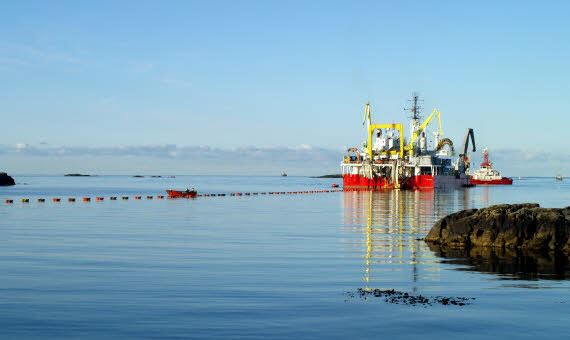
|
|
Laying a subsea power cable – in this case, to the Valhall platform in the North Sea. Photo: Nexans Norway |
The crossing was dependent on technical developments in the field of direct-current submarine cables, because power transmission over such long distances can only be achieved with direct current.
The Skagerrak cables arrive
In 1976 and 1977, two direct-current cables were laid between Kristiansand in Norway and Jylland in Denmark. Length: 130 kilometres; Maximum depth: 550 m. A third cable came into operation in 1993.
The Skagerrak cables depended on technological breakthroughs. EFI, now SINTEF Energy Research, was heavily involved in the development of the insulation system.
Lower, more stable electricity prices
The Skagerrak cables gave Norway an important infrastructure element that complemented the overhead cables to Sweden.
In White Paper no. 18 (2003 – 2004), the Ministry of Petroleum and Energy wrote:
“Norway is dependent on the good functioning of the power exchange system between the Nordic countries and beyond. Nordic cooperation has contributed to maintaining lower, more stable prices for Norwegian producers and consumers, and has provided environmental benefits by reducing the need for new investments in domestic electricity generation schemes.”
World-wide cable exports
The Skagerrak cables were the starting pistol for the establishment of the submarine cable factory in Halden, which at first was operated by ITT (Standard Telephones and Cables), subsequently Alcatel (Alcatel Kabel Norge), and which currently forms part of the global cable group Nexans (Nexans Norway).
The Halden plant also produces umbilicals for the offshore industry, as well as cables and electromechanical equipment for direct electrical heating of subsea pipelines. It exports its products all over the world.
